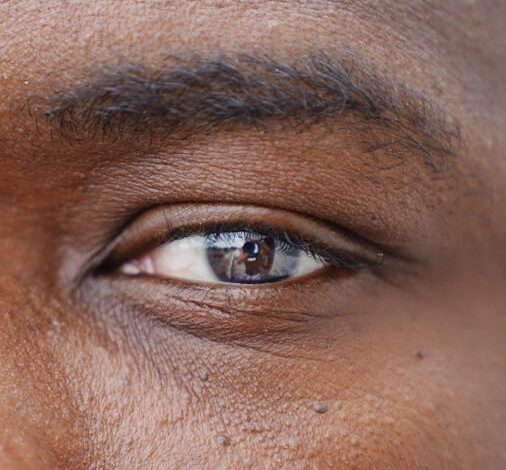Autism Is Not a Single Condition and Has No Single Cause, Scientists Conclude

Autism Is Not a Single Condition and Has No Single Cause, Scientists Conclude
Estimated Reading Time: 5 minutes
- Autism is now understood as a complex spectrum of diverse conditions, not a single monolithic disorder.
- Its origins are multifaceted, involving a tapestry of genetic predispositions, environmental factors, and unique developmental trajectories.
- Individuals diagnosed with autism present highly varied profiles, necessitating personalized diagnostic approaches and tailored support strategies.
- The distinction between early and later diagnoses highlights different underlying biological mechanisms, requiring age-specific research and interventions.
- Embracing neurodiversity and challenging stereotypes are crucial steps toward fostering a more inclusive and supportive society for autistic individuals.
- The Spectrum Reimagined: Beyond a Monolithic Diagnosis
- A Tapestry of Origins: Genetic, Environmental, and Developmental Factors
- Implications for Diagnosis and Intervention
- Actionable Steps for a More Inclusive Future:
- Real-World Example:
- Conclusion
- Take Action Today:
- Frequently Asked Questions (FAQ)
For decades, the understanding of autism has undergone significant transformations. Once viewed through a narrow lens, often characterized by a limited set of observable behaviors, scientific research has progressively peeled back the layers of this complex neurodevelopmental condition. The evolving consensus among researchers and clinicians is clear: autism spectrum disorder (ASD) is not a monolithic entity, nor does it stem from a singular origin.
Instead, it represents a vast and intricate tapestry of different conditions, each with its own unique genetic predispositions, developmental trajectories, and environmental interactions. This shift in perspective is not merely academic; it has profound implications for how we diagnose, support, and ultimately understand autistic individuals worldwide.
The Spectrum Reimagined: Beyond a Monolithic Diagnosis
The term “autism spectrum disorder” itself hints at the variability, but the true extent of this diversity is only now being fully appreciated. It’s not just about varying degrees of severity in a core set of traits. Rather, it encompasses a multitude of distinct profiles, each presenting with unique strengths, challenges, and co-occurring conditions.
Some autistic individuals may display profound communication difficulties alongside exceptional abilities in pattern recognition or detailed memory. Others might be highly verbal but struggle with sensory sensitivities or motor coordination. The differences extend to cognitive profiles, emotional regulation, and even basic physiological processes.
This wide array means that two individuals with an autism diagnosis might share very few overt characteristics, making a blanket approach to support often ineffective. Understanding this reimagined spectrum requires moving beyond stereotypes and embracing the unique identity of each person.
A Tapestry of Origins: Genetic, Environmental, and Developmental Factors
The quest for a single “autism gene” has largely been superseded by an understanding that genetic factors are incredibly diverse and complex. Scientists have identified hundreds of genes that contribute to autism risk, each playing a small part, often in combination with others. These genetic variations can range from rare single-gene mutations with significant effects to common genetic variants that collectively increase susceptibility.
Crucially, genetics don’t tell the whole story. Environmental factors are increasingly recognized as playing a role, not as sole causes, but often interacting with genetic predispositions. These can include prenatal exposures, perinatal complications, or other early life experiences that might influence brain development.
The interplay between genes and environment shapes a person’s developmental pathway. Different genetic combinations, exposed to different environmental influences, lead to distinct patterns of brain development and neurological functioning. This variability explains why the manifestation of autism is so diverse.
A significant finding supporting this nuanced view states: “Research reveals that those diagnosed with autism early show distinct genetic and developmental profiles from those diagnosed later.” This critical insight underscores that autism isn’t a singular developmental pathway gone awry at one specific point, but rather a collection of different pathways that lead to similar diagnostic criteria at different life stages.
This suggests that the underlying biological mechanisms in a child diagnosed at 2 years old might be fundamentally different from those in an adolescent or adult diagnosed much later. These differences necessitate tailored research approaches and, ultimately, personalized interventions.
Implications for Diagnosis and Intervention
Embracing the understanding that autism is not a single condition has profound implications for clinical practice. The traditional “one-size-fits-all” approach to diagnosis and intervention is being replaced by a more personalized and nuanced framework.
Diagnostic evaluations are becoming more comprehensive, looking beyond superficial behaviors to identify specific cognitive, sensory, and developmental profiles. This allows for a more precise understanding of an individual’s unique needs and strengths, moving beyond a simple label to a functional description.
For interventions, this means moving towards precision support. Instead of applying general behavioral therapies, clinicians can tailor strategies to address specific challenges, such as sensory processing difficulties, executive function deficits, or particular communication styles. This personalized approach is more effective and respectful of the individual’s neurotype.
Furthermore, recognizing the distinct profiles of early versus later diagnosed individuals could pave the way for age-specific screening tools and support systems, optimizing outcomes across the lifespan.
Actionable Steps for a More Inclusive Future:
- Advocate for Personalized Assessment and Support: If you or a loved one is autistic, seek out professionals who understand the spectrum’s diversity. Advocate for assessments that identify specific strengths and challenges, leading to highly individualized support plans rather than generic therapies.
- Support Diverse Research Initiatives: Encourage and support research that focuses on the heterogeneity of autism. Funding studies that investigate specific genetic subtypes, environmental interactions, and developmental trajectories will accelerate our understanding and lead to more targeted interventions.
- Challenge Stereotypes and Promote Neurodiversity: Educate yourself and others that autism manifests in countless ways. Challenge preconceived notions and embrace the neurodiversity paradigm, which views neurological differences as natural variations in the human brain, not deficits to be cured.
Real-World Example:
Consider two individuals, both diagnosed with ASD in adulthood. Anya, 35, thrives in a highly structured IT role, meticulously analyzing data with an exceptional eye for detail, but finds open-plan offices overwhelming due to noise and struggles with unscripted social interactions. Ben, 28, is a talented musician with perfect pitch, communicates eloquently, but experiences profound anxiety in new situations and struggles with motor planning for daily tasks like cooking. While both have an autism diagnosis, their support needs and career strengths are vastly different, illustrating the distinct profiles within the spectrum.
Conclusion
The scientific journey into understanding autism has brought us to a critical juncture. We now recognize autism not as a singular condition with a single cause but as a complex constellation of neurodevelopmental differences arising from a myriad of genetic, environmental, and developmental interactions. This paradigm shift encourages a more nuanced, individualized, and ultimately more effective approach to diagnosis, support, and acceptance.
By embracing the rich diversity within the autism spectrum, we can move beyond outdated stereotypes and foster a society that truly values and supports every autistic individual for who they are.
Take Action Today:
Join the conversation about neurodiversity and the evolving understanding of autism. Share this article to help spread awareness and encourage a more informed, empathetic approach. Visit Autism Speaks or Autistic Self Advocacy Network (ASAN) for more resources and ways to get involved.
Frequently Asked Questions (FAQ)
Q: What is the evolving scientific understanding of autism?
A: Scientists now conclude that autism is not a single condition with one cause, but rather a complex spectrum encompassing many distinct neurodevelopmental profiles with diverse genetic, environmental, and developmental origins.
Q: Why is “autism spectrum disorder” a more accurate term?
A: The term reflects the vast variability in how autism presents. It’s not just about severity, but about fundamentally different profiles, strengths, challenges, and co-occurring conditions that make each autistic individual unique.
Q: What are the primary factors contributing to autism?
A: Autism arises from a complex interplay of diverse genetic factors (hundreds of genes), environmental influences (like prenatal exposures), and developmental pathways. There isn’t a single “autism gene” or environmental trigger.
Q: How does this new understanding impact diagnosis and intervention?
A: It shifts clinical practice from a “one-size-fits-all” approach to personalized assessment and precision support. Diagnoses aim to identify specific profiles, and interventions are tailored to an individual’s unique needs, rather than generic therapies.
Q: What is the significance of distinguishing between early and later autism diagnoses?
A: Research indicates that individuals diagnosed early often have distinct genetic and developmental profiles compared to those diagnosed later. This suggests different underlying biological mechanisms, necessitating tailored research and age-specific interventions.





